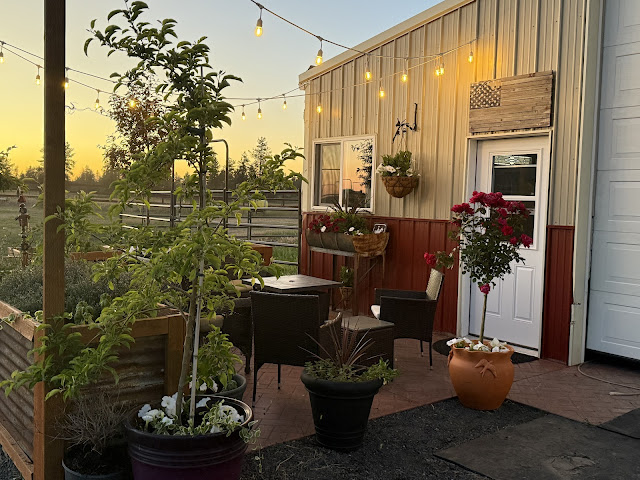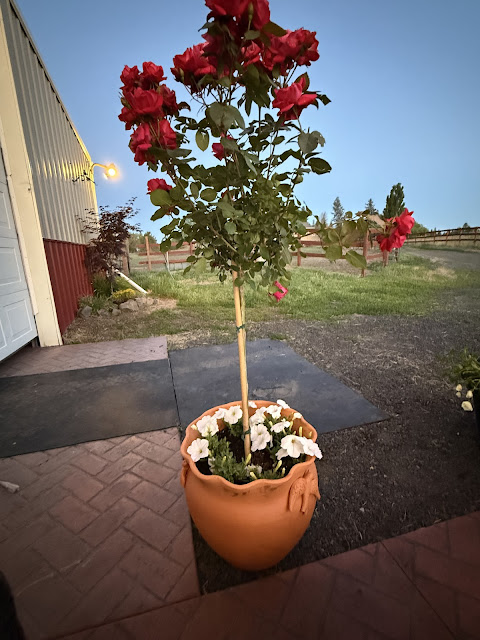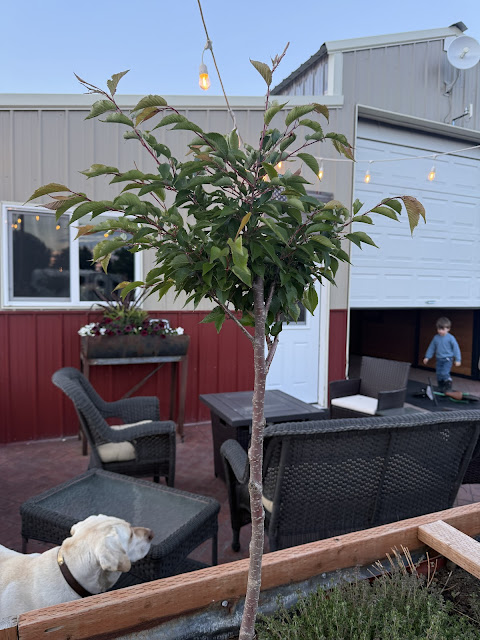At our lesson yesterday, my trainer used Leah as a tool to distract Tumbleweed while I rode him in the arena. Our focus has been on reducing “herd bound” behavior and finding safe ways to redirect, and regain, his attention when it occurs.
Tumbleweed does fine when the mares aren’t there, but when they are, he feels a need to protect them. The question for us is how to turn that protectiveness off when he is at work.
Important to also remember that protectiveness is a good quality in the herd environment. Regina reminded me of that yesterday, and I looked at it quite differently through that lens. It is, in fact, noble of him.
——
This is the work we did.
I warmed up with the previous exercise of moving him out on the line and when his attention shifted to Leah, asking him to slow to stop, move his hind end away from me, and face up. Back and forth. We also did the exercise where I have him stop and face up when his tail passed her in my line of sight. He remembered it well and gave his full attention quickly.
Then a trainer showed up with a trailer full of horses and mules. He was a young guy and really nice. He immediately complimented me on Tumbleweed, which instantly endeared me to him and made me wish my daughter had been there. Matchmaker matchmaker.
It was a new distraction and I could see Tweed getting more worried for Leah who was standing tied nearby. She also go more amped up with the new arrivals.
I told the young man what we were working on and he said he was there to do the same, so please forgive his mules for braying for each other (they weren’t bad). He went about riding each one away from the others while I worked on getting and keeping Tweed’s attention.
By the time Regina arrived, I was in saddle.
She then took Leah to a spot right outside the arena and had me ride Tumbleweed along the fence line in front of her. If his attention went to her, I was to turn him away from the fence and then continue, at a fast pace, the opposite direction. This had to be done quickly, as soon as I lost his attention, and we had to take up a brisk walk immediately after. We did it at both walk and trot.
Then Regina walked away with Leah behind the announcer’s booth, and eventually reappeared on the other side.
Tweed got much more worked up and became braced in his body, making it difficult to turn him, but we worked through it doing the same thing.
It was a little scary at that point. I felt like his mind had exited and my communication with his mind had momentarily disappeared. I had to have faith in the plan and what Regina was telling me to do.
Regina asked me to ride him away, around the barrels, and back, out and back. If I lost his attention, vertical flexion, otherwise, a loose rein. If he picked up his speed coming back towards Leah, I had to make him maintain that same speed (he chose) going away from Leah.
We did that work at a fast trot and I think it was harder on me than him. You forget how physical riding is until moments like that. But I stayed with it, and we eventually had him moving out all over that arena, Leah disappearing and reappearing, and Tweed completely not caring. Leah who?
That was probably 40 minutes of the lesson, and when we were satisfied with his ability to maintain attention, I rode him out to the obstacle course where we worked on the same principles of attention to attention over the ladder, bridge, and sand pit.
Finally, I rode him away from Leah and over the obstacles, and he did so well with his attention that we ended it there.
——
This work is so awesome. Feeling that partnership with Tumbleweed emerge under an extreme stress test is quite satisfying. Also, working through his worst responses in a safe environment and seeing that yes, I can regain his attention with these basic principles. It builds my confidence in handling whatever may come our way.



























































